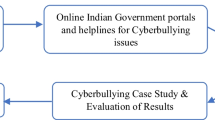Abstract
In the recent years, an alarming rise in the incidence of cyber attacks has made cyber security a major concern for nations across the globe. Given the current volatile socio-political environment and the massive increase in the incidence of terrorism, it is imperative that government agencies rapidly realize the possibility of cyber space exploitation by terrorist organizations and state players to disrupt the normal way of life. The threat level of cyber terrorism has never been as high as it is today, and this has created a lot of insecurity and fear. This study has focused on different aspects of cyber attacks and explored the reasons behind their increasing popularity among the terrorist organizations and state players. This study proposes an empirical model that can be used to estimate the risk levels associated with different types of cyber attacks and thereby provide a road map to conceptualize and formulate highly effective counter measures and cyber security policies.

Similar content being viewed by others
References
Bieda, D., Riddle, E., & Halawi, L. (2015). Cyberspace: A venue for terrorism. Issues in Information Systems, 16(3), 33–42.
Carr, J., & Shepherd, L. (2010). Inside cyber warfare. Sebastopol, CA: O’Reilly Media Inc.
Denning, D. (2001). Activism, hacktivism, and cyberterrorism: the internet as a tool for influencing foreign policy. In J. Arquilla & D. Ronfeldt (Eds.), Networks and netwars the future of terror, crime, and militancy (1st ed., pp. 239–288). Santa Monica, CA: RAND.
Dhs.gov. (2015). Cybersecurity|Homeland Security. Retrieved from http://www.dhs.gov/topic/cybersecurity. Accessed December 24, 2015.
Dynes, R. (2006). Natural Hazards Observer—November 2006|Natural Hazards Center. Colorado.edu, Retrieved from http://www.colorado.edu/hazards/o/archives/2006/nov06/nov06c.html Accessed December 25, 2015.
Herzog, S. (2011). Revisiting the Estonian cyber attacks: Digital threats and multinational responses. Journal of Strategic Security, 4(2), 49–60.
Kerr, P., Rollins, J., & Theohary, C. (2009). The Stuxnet Computer Worm: Harbinger of an emerging warfare capability. Washington, DC: Department of Homeland Security.
Lewis, J. (2002). Assessing the risks of cybertwrrorism, cyber war, and other cyber threats. Washington, DC: Center for Strategic and International Studies.
Lewis, J. (2009). The “Korean” cyber attacks and their implications for cyber conflict|Center for Strategic and International Studies, Csis.org. Retrieved from http://csis.org/publication/korean-cyber-attacks-and-their-implications-cyber-conflict. Accessed December 26, 2015.
NATO. (2010). Strategic concept for the defence and security of the members of the North Atlantic Treaty Organisation. Lisbon: NATO.
O’Harrow, R. (2013). Zero day. New York: Diversion Books.
Rademacher, K. (2005). Clarke: ID theft prevention tied to anti-terrorism efforts. LasVegasSun.com. Retrieved from http://lasvegassun.com/news/2005/apr/13/clarke-id-theft-prevention-tied-to-anti-terrorism. Accessed December 23, 2015.
Rid, T., & McBurney, P. (2012). Cyber-weapons. The RUSI Journal, 157(1), 6–13.
Rollins, J., & Wilson, C. (2007). Terrorist capabilities for cyberattack: Overview and policy. Washington, DC: Congressional Research Service.
Rustici, R. M. (2011). Cyberweapons: Leveling the international playing field”. Parameters, 41(3), 32–42.
Theohary, C., & Rollins, J. (2015). Cyberwarfare and cyberterrorism: In brief. Washington, DC: Congressional Research Service.
Weimann, G. (2005). Cyberterrorism: The sum of all fears? Studies in Conflict & Terrorism, 28(2), 129–149.
Weimann, G. (2008). Al-Qaida’s extensive use of the Internet, Ctc.usma.edu. Retrieved from https://www.ctc.usma.edu/posts/al-qaida%E2%80%99s-extensive-use-of-the-internet. Accessed December 15, 2015.
Wilson, C. (2003). Computer attack and cyberterrorism: Vulnerabilities and policy issues for congress. Washington, DC: Congressional Research Service.
Author information
Authors and Affiliations
Corresponding author
Rights and permissions
About this article
Cite this article
Albahar, M. Cyber Attacks and Terrorism: A Twenty-First Century Conundrum. Sci Eng Ethics 25, 993–1006 (2019). https://doi.org/10.1007/s11948-016-9864-0
Received:
Accepted:
Published:
Issue Date:
DOI: https://doi.org/10.1007/s11948-016-9864-0



